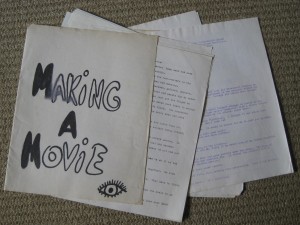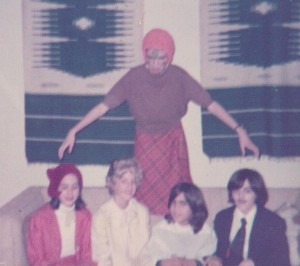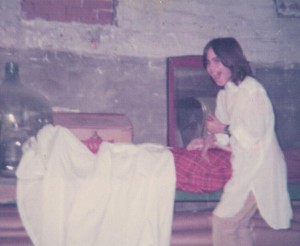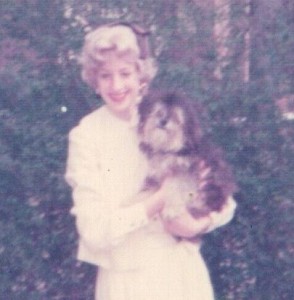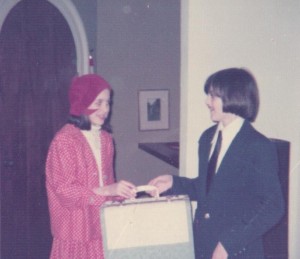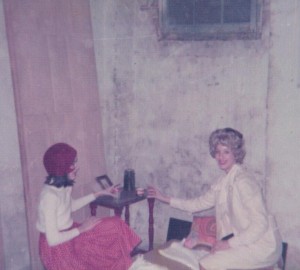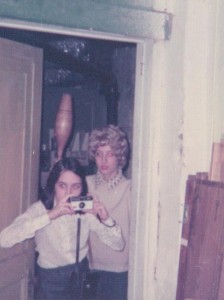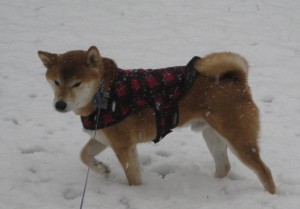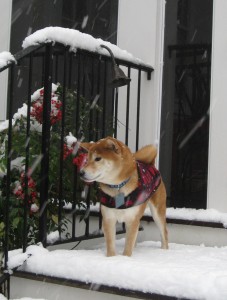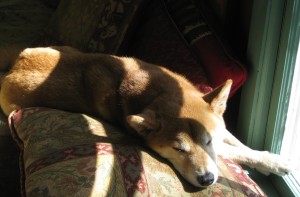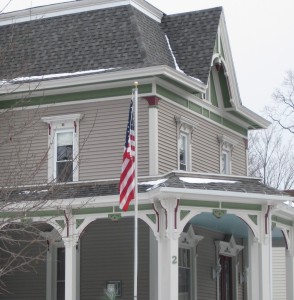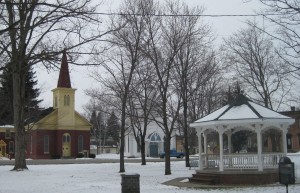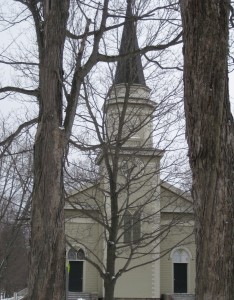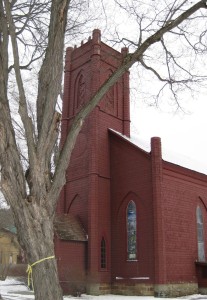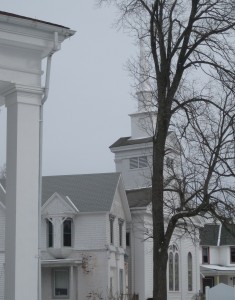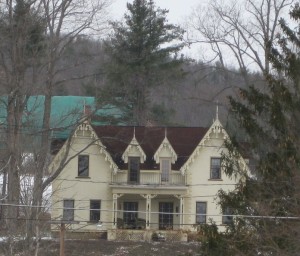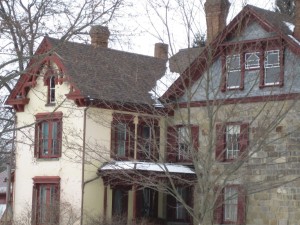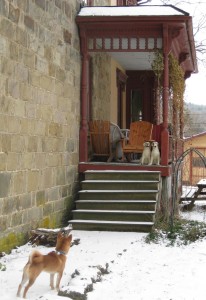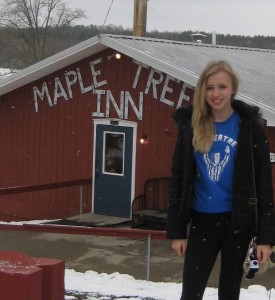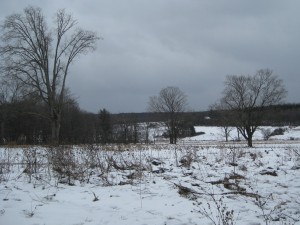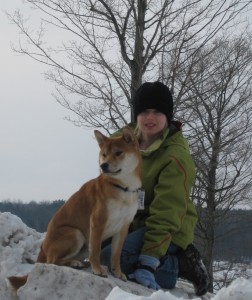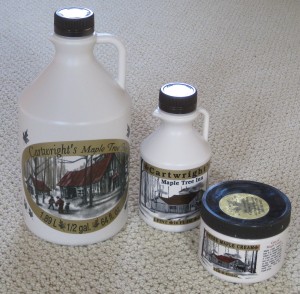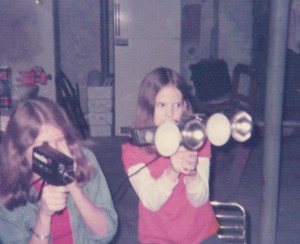
Filming in Dr. Welby’s basement digs: Katie’s older sister acts as camerawoman,
while Rebecca’s younger sister aims the lights.
As is the case with most worthwhile projects, making our Super-8 movie had its moments of exhilaration, unforgettable fun, boredom and frustration. Naturally, the initial planning stage was the most gratifying. As I remember it, writing the movie with Katie was nothing less than a blast. I dislike this overused hyperbolic term; I cast a skeptical eye on those who repeatedly claim to have had a blast doing this or that. Really? A blast? I doubt it. But in this case, it was accurate. There was a heady sense of possibility in the air as Katie and I bounced ideas off one another. We’re gonna make a movie! Our movie! We’re in control! In our own minds, we were incredibly funny. We were good! We should have been destined for Saturday Night Live, as yet in its infancy.
As soon as we began filming, we realized we had no control. It was terrific to get the cast together for filming; it was like getting school credit for regularly attending a party with our best friends. But we encountered many difficulties. Filming began in February, and because we often worked on weekday afternoons, the light was erratic, and it disappeared far too quickly. Some of our pivotal outdoor scenes were indecipherably dark. Because we were working with actual film, the complete absence of light was not apparent until after developing. In March, with the start of Daylight Savings Time, suddenly all was intense brightness.
The drastic changes in light made for continuity issues, to say the least. We also found it difficult to maintain a convincing sense of flow when cast members’ appearances changed unexpectedly from day to day. Was Amanda wearing that scarf yesterday? Can anyone remember? Didn’t you have a different sweater? And then Dr. Welby got his hair cut from shoulder to chin length about half-way through filming.
It doesn’t sound difficult to avoid routinely filming the movie lights. Evidently it was trickier than it seems. The lights, and often the gaffers who held them, appeared in the background, (or occasionally the foreground) time after time.
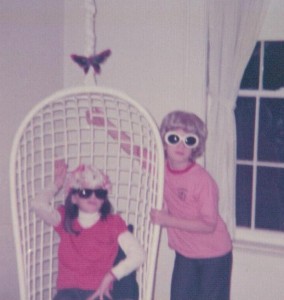
Our two gaffer-gophers on break, modeling costume accessories.
They got nearly as much screen time as the actual cast.
The complications of filming were nothing compared to those of the editing process that followed. We thought we were being professional by shooting all the scenes involving the same set at the same time. We didn’t know how much amateur splicing left to be desired. Again, for any younger readers, if they exist, we were dealing with real film that must be sent away for processing. It then required cutting apart and taping back together so the scenes would flow in correct order. Personal computers, digital video and talking camera phones were still the stuff of James Bond movies and the fever dreams of a few elite techie geniuses.
For one part of the final project, Katie included a section entitled “How to Splice.” I sat at her side, some of the time, for moral support, as she followed the tedious steps she would outline in her paper. We would look at the film through an editor, a machine that I have completely blocked from memory, but one that I described in my report as resembling a tiny television screen. When we decided where the scenes should be cut, pushing something called the condensor on the editor resulted in a knick in the film. This knick indicated where the film should be cut. With scissors. Actual, not virtual scissors. Then Katie would painstakingly reattach the frames in the new order with splicing tape.
This was old-school cutting and pasting, and our movie required extreme amounts of it. The film was so thick with tape that it couldn’t pass smoothly through the projector. I can still hear the painful sputtering, ticking sound the film made as the scenes bounced up and down, roller-coaster style. How we dealt with this problem is my haziest recollection, probably because it was distinctly unpleasant. I vaguely remember discussing the additional, not insignificant cost to make a jump-free copy of the film. We must have managed this, because the film is, largely, viewable. It is no masterpiece, but it can be seen.
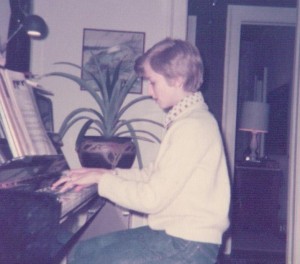
Every silent film needs music, of course. Using my portable tape player, I recorded the score. The cassette, long lost, consisted of selections by Scott Joplin and Edvard Grieg, pieces I happened to be working on during piano lessons. The music didn’t always fit exactly with the action, but if we timed the start of the tape and the film carefully, it didn’t miss by much.
As I mentioned earlier, it’s been a while since I’ve seen our movie. Its form continues to lapse further into obsolescence. I still have the actual film, and H’s father, a camera buff, owns a working movie projector from the 70s. During a future visit to Rochester, maybe we’ll arrange a family viewing. Years ago, Rebecca’s husband had the film converted to video and VHS copies made. We still have a VCR, somewhere in our basement, if we wanted to go looking. No one has yet been moved to make a digital version of the film.
My daughter saw the movie years ago, when she was still young enough to be impressed.
She’s been involved in her middle school’s news team for the past two years. With access to sophisticated video technology, the kids regularly turn out high-quality videos. Out of school, they can use their phones to produce similarly remarkable results. D would be amused at the intricate physicality of the old editing process. And she might be interested to see her mother at her age.
When I do see Dark Secrets again, I expect to know how I’ll feel. I’ll have a better understanding of my parents’ and other adults’ bafflement over some of our dramatic and comedic choices. Why does the Creation have a lightning bolt across her face? Why is the butler gleefully counting his money as he opens the door? I’m not sure why that’s supposed to be funny. I will see their point. But I will know why.
Because in some part of my soul, I’ll be fourteen again. I’ll be there with my two best friends Katie and Rebecca, reveling in our shared appreciation of idiosyncracy and non sequitur. Life’s possibilities will once again open wide. The future will be a distant, glowing horizon, the one evoked mistily in high school graduation speeches. SNL may see us yet! Who would have guessed that after all these years, it would still be around? And like us, it’s not just surviving, but going strong.









